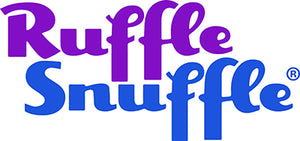Expert tips on how to protect your dog from the dangers lurking in the garden

Identify toxic plants and flowers
The prettiest parts of your garden could be the most dangerous to your dog. Toxic plants are one of the biggest dog health hazards in your garden. Many common plants and flowers, such as daffodil buds and tulips, are toxic to animals, leading to vomiting, diarrhoea and even seizures.
Before bringing a dog into your home, check the ASPCA’s full list of plants that are toxic to your pet, and see what you need to remove or block off in order to protect your dog’s health and safety.
If you’ve discovered that your garden is home to a toxic plant, remove it from the area, clear any seeds or roots and replace it with the following plants that are all safe for dogs; Roses, Sunflowers, Marigolds, Hibiscus, Snapdragon, Aster, Daylilies and Herbs.
Unfortunately for owners, flowers and weeds aren’t the only types of greenery that can cause harm to pets. Common garden fruit and vegetable plants can also be toxic to dogs. Tomato plants, rhubarb, onions, garlic and fungi might be tasty foods to us humans, but they are toxic to pets and can result in an upset stomach if consumed.
If you suspect your pet has eaten a toxic plant, contact your local vet immediately.
Create a secure place for tools and equipment
Summer is an important time of the year for any gardener or aspiring horticulturist. But during this time, it’s crucial to know that your garden probably contains a few hidden dangers that can injure your pet. Garden tools, including lawnmowers, strimmers, sharp tools and loppers should be securely stored in a shed or in your home away from your pets.
Screws, bolts and other small fittings can become a choking hazard for your dog, especially young puppies who enjoy exploring the garden with their nose and mouth. Your dog could easily injure itself on sharp items left lying around.
Make sure to keep any potentially poisonous chemicals, such as garden fertiliser and insect repellents locked away or stored high out of reach from your four-legged friend. If your puppy manages to get hold of something dangerous, contact your vet immediately.
Secure your garden with fencing
Letting your dog play or roam in the garden is an excellent way to let them burn off some energy between walks, but the area must be kept safe and secure. Make sure your garden is secured with a fence tall enough to contain an energetic dog. Check for gaps where your dog could squeeze through, and ensure fence panels are well placed in the ground so your mischievous dog can’t dig underneath. Finally, make sure the panels are secured and sturdy enough to resist a boisterous dog.
Keeping your pooch safe is just as important as keeping them from escaping the garden, so barbed wire and sharp materials are not suitable type of fencing for homes with dogs. Sharp or pointed fencing can cause severe injuries, so picket fencing is your best option.
Keep ponds and pools covered
Ponds, swimming pools, and jacuzzis can pose a severe danger to pets, especially during the year’s warmer months. Ensure that the water is covered or secured with fencing and that your dog is never out by the water unsupervised.
If you have a lake, pond, or stream within your garden or close by, your puppy may be exposed to blue-green algae, a term used to describe bacteria found in warm fresh or salted water, called cyanobacteria. If your dog takes a quick drink from the water, it could lead to vomiting, diarrhoea, or lethargy due to harmful toxins which can stop their liver from functioning properly.
Remove any excess soil and compost
The start of summer signals sunnier weather, longer days and hopefully more time spent in the garden for you and your dog. But, unfortunately, it’s not very well known that compost can be highly toxic to pets, causing serious illness.
Compost is a mixture of decomposing food scraps, recycled plants and other nutrient-rich organic matter. As the compost begins to decompose, it can produce dangerous mould spores and bacteria, potentially creating mycotoxins that are highly toxic to animals.
If you believe your dog has been digging or playing in the compost, keep an eye out for warning symptoms and contact your local vet immediately. The symptoms of compost poisoning include hyperthermia, diarrhoea, vomiting, foaming at the mouth, agitation, hypersensitivity and lethargy.
If you know your pet has eaten compost, call your local vet straight away and don’t wait for the symptoms to show, as specialised treatment will be required.
Safely remove slugs and snails
Slugs and snails start to reappear when the weather turns cold and wet, and your pet will likely encounter one at some point in its life. Dogs are the most common pet to come in contact with slugs and snails due to their curious and playful nature. These garden creatures contain lungworm parasites, which can cause serious health issues if passed on to your dog, including heart problems, breathing problems and haemorrhaging.
To safely remove slugs and snails from your garden, do not use snail bait, as they are commonly mixed with toxics, and ingestion can be fatal for your dog. Instead, fill tubs with beer around your garden that are accessible for slugs and snails but hidden from children and pets. The snails and slugs will be attracted to the beer, will fall into the tub and drown.
Remove any cocoa mulch
Chocolate is dangerous for dogs, as it contains ingredients such as theobromine and caffeine. Like chocolate, cocoa mulch, a garden material spread on flower beds and borders to retain moisture and suppress weeds, also contains harmful toxins. If a dog ingests cocoa mulch, it can result in vomiting, increased heart rate, tremors and seizures.

